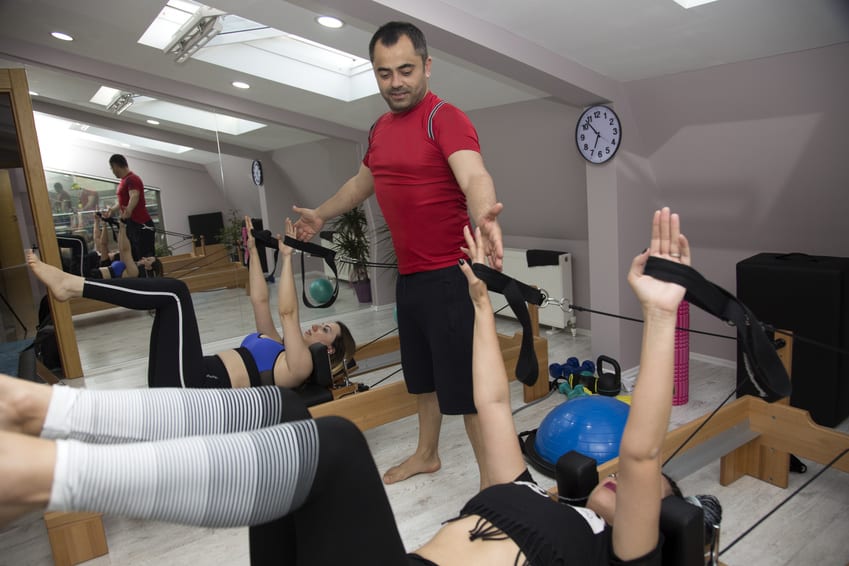Natour, J., de Araujo Cazotti, L., Ribeiro, L. H., Baptista, A. S., & Jones, A. (2015). Clinical rehabilitation,29(1), 59-68.
Abstracted by: Rachel Swortwood, SPT, Springfield, Missouri
Article Summary
This randomized, controlled clinical trial with a blinded evaluator, evaluated the effects of pilates as a treatment method on patients with chronic non-specific low back pain (LBP). Sixty patients were selected from a physical therapy waiting list that met the inclusion criteria, and randomly assigned to one of two groups.
The experimental group (n=30) was instructed to maintain medication treatment with the use of non-steroidal anti-inflammatory drug (NSAID), and underwent treatment in a pilates studio from a certified, physical educator with 10 years of experience. Pilates classes lasted 50 minutes, followed a pre-established pilates protocol, and consisted of three to four patients. They took place twice a week for a total of 90 days. The control group (n=30) was instructed to continue medication treatment with the use of NSAID, and did not undergo any other intervention. An examiner blinded to the assignment performed all evaluations at baseline, at 45 days, at 90 days, and at 180 days after the conclusion of the exercise program. Parameters that were assessed included: pain (Visual analog scale), function (Roland-Morris questionnaire), quality of life (SF-36), satisfaction with treatment (Likert scale), flexibility (sit-and-reach), and NSAID intake. Significant differences were found favoring the experimental group regarding pain, function, quality of life domains, and amount of NSAIDs taken.
[wprpi]
Personal Commentary
Pilates uses a combination of repetitive exercises that can be adapted to provide either gentle strength training for rehabilitation or a strenuous workout. The exercises are designed to increase muscle strength, endurance, and flexibility, as well as improve balance and posture (Kloubec 2011). As Kloubec stated the focus is on effective muscle recruitment which places the emphasis on energy efficiency and quality of performance. Pilates focuses on breathing and concentration during the execution of each exercise, and prior to each exercise the goal is to properly initiate the transversus abdominis muscle to improve the control of the movement. It is widely known and studied that exercise is better than no exercise on the effects of chronic low-back pain. However, some previous research has not shown significant differences in chronic low-back pain when implementing pilates. A systematic review by Miyamoto and colleagues concluded that “pilates was no better than other types of exercises for reducing pain intensity.” Another systematic review with meta-analysis however, found that pilates-based exercises were superior to minimal intervention for pain relief, and that articles stating otherwise were of low quality and should be interpreted with caution due to the heterogeneity of pooled studies (Lim 2011).
Regardless of the research found, pilates incorporates several components of stabilization that should be included with regular treatment of patients with chronic low back pain, especially if they are experiencing instability. With a good pilates instructor and a patient with an open mind to the concept, the use of pilates may be a unique treatment option that can be used in addition to other skilled physical therapy interventions
References
Kloubec, J. (2011). Pilates: how does it work and who needs it? MLTJ Muscles, Ligaments and Tendons Journal, 1(2), 61-66.
Lim EC, Poh RL, Low AY, et al. Effects of pilates based exercises on pain and disability in individuals with persistent nonspecific low back pain: a systematic review with meta-analysis. J Orthop Sports Phys Ther 2011; 41:70-80
Miyamoto, G. C., Costa, L. O. P., & Cabral, C. M. N. (2013). Efficacy of the Pilates method for pain and disability in patients with chronic nonspecific low back pain: a systematic review with meta-analysis. Brazilian Journal of Physical Therapy, 17(6), 517–532.

